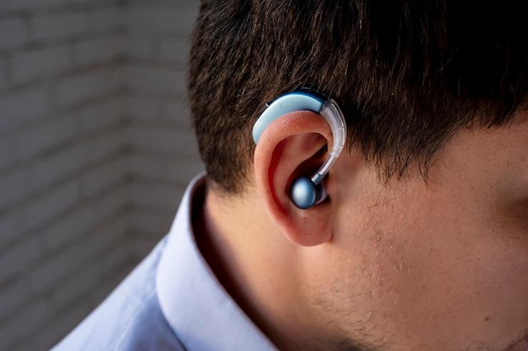
Otoplasty, or ear shaping surgery, is a cosmetic procedure designed to enhance self-confidence by reshaping or repositioning the ears to correct protrusion or asymmetry. Hearing aid users may wonder how the surgery could impact device fit and function, as ear shape or position changes might affect how hearing aids sit. Consulting a surgeon and audiologist before surgery can address these concerns and ensure any necessary adjustments are made. This approach allows individuals to achieve desired aesthetic results while maintaining hearing aid functionality.
What Is Otoplasty Surgery?
Otoplasty is a cosmetic procedure that reshapes or repositions the ears, helping individuals with concerns like prominent, misshapen, or asymmetrical ears. It is suitable for children and adults, and many choose it early to avoid bullying. The surgery may involve removing excess cartilage or repositioning the ears closer to the head, tailored to each patient’s needs. Beyond cosmetic benefits, otoplasty can boost self-esteem and improve emotional well-being, particularly for children facing social stigma. Consulting an experienced surgeon ensures personalized results and addresses individual concerns.
Common Reasons For Considering Otoplasty Surgery
Individuals undergo otoplasty surgery for various reasons, including correcting protruding ears, addressing congenital deformities, and restoring a youthful appearance. Protruding ears, a common concern, can cause self-consciousness and social anxiety, particularly in children who may face teasing or bullying. Otoplasty resolves this issue, fostering confidence and comfort. The procedure is also sought to correct congenital deformities, such as asymmetry or underdeveloped ears, significantly improving appearance and self-esteem. Additionally, adults may opt for otoplasty to counter age-related changes in ear shape, achieving a more youthful look and enhanced self-image. This versatile surgery provides both aesthetic and emotional benefits.
Benefits Of Otoplasty Surgery For Ear Shaping
Otoplasty surgery offers significant benefits, primarily enhancing the appearance of the ears. For those self-conscious about ear size or shape, it can be transformative, boosting confidence and creating facial balance. The procedure is quick, typically lasting under two hours, and many patients resume normal activities within one to two weeks. Recovery is straightforward, with minimal downtime. In addition to physical improvements, otoplasty can positively impact psychological well-being, reducing insecurities and fostering self-acceptance.
Impact Of Otoplasty Surgery On Wearing Hearing Aids
Due to changes in the ear’s shape, otoplasty may affect the fit and comfort of hearing aids. Depending on the extent of the surgery and the type of hearing aid, some users may need adjustments or new devices. Communication between the surgeon and audiologist helps balance hearing needs with aesthetic goals. Timing adjustments from hearing aids in Southern Maine are also necessary, with some audiologists recommending changes after healing while others suggest them before surgery. This collaborative approach ensures that both hearing and aesthetic outcomes are successfully achieved.
Preparing For Otoplasty Surgery
Preparation for otoplasty surgery involves consulting a qualified surgeon to review the ear structure, goals, and medical history to ensure suitability. Hearing aid users should discuss potential impacts on their devices to tailor the surgical plan. Patients are encouraged to ask questions about recovery and expected results. In the weeks leading up to surgery, patients may need to avoid blood thinners and anti-inflammatory medications to reduce complications and arrange transportation, as anesthesia is typically used. These steps help minimize stress and ensure a successful outcome.
The Otoplasty Surgery Procedure
The otoplasty surgery procedure begins with general or local anesthesia based on the patient’s age and surgery complexity. Once sedated, the surgeon makes incisions behind the ears or in natural folds to minimize visible scarring. Through these incisions, the surgeon reshapes the cartilage, which may involve removing excess cartilage, repositioning the ears, or reconstructing them for congenital deformities. Symmetry and balance are key throughout. After the adjustments, incisions are closed with sutures, and protective dressings are applied. The procedure typically lasts one to two hours, followed by a brief monitoring period before the patient is discharged to recover at home.
Recovery And Aftercare For Otoplasty Surgery
Recovery from otoplasty is generally straightforward but requires attention to ensure proper healing. Pain relievers are commonly used to manage swelling, bruising, and discomfort. Patients may need a headband or compression garment for several days to reduce swelling. Avoiding strenuous activities, including exercise and contact sports, is essential during recovery. Follow-up appointments are necessary to monitor healing and address any complications. Patients should report any concerns, such as excessive swelling or signs of infection, for timely intervention.
Risks And Complications Of Otoplasty Surgery
While otoplasty is generally safe, it carries risks, like any surgery. Potential complications include infection, bleeding, and anesthesia reactions, though these are rare. Asymmetry may occur due to anatomical differences, possibly requiring additional revisions. Clear communication with the surgeon can help manage expectations. Scarring is another concern, though incisions are typically discreet, and scars fade over time. Following aftercare instructions is key to minimizing scarring and ensuring the best results. Proactive aftercare supports healing and helps patients enjoy the benefits of their enhanced ear shape.
Alternatives To Otoplasty Surgery For Ear Shaping
For those not ready for surgery, non-surgical alternatives to otoplasty are available. Injectable fillers can temporarily reshape the ear by adding volume, though the results require repeat treatments. Ear molds or prosthetics provide a cosmetic solution without surgery and may be suitable for children or those uncertain about permanent procedures. Choosing between otoplasty and non-surgical options depends on individual goals and comfort levels. Consulting with a qualified otoplasty surgeon helps determine the best approach for achieving the desired ear shape.
Conclusion
In summary, otoplasty surgery offers a transformative solution for enhancing the appearance of the ears and boosting self-esteem and quality of life. For hearing aid users, it’s essential to consider how the surgery may impact the fit and function of the devices. Understanding the surgical process, recovery, and potential risks is critical. Patients can confidently navigate the procedure by preparing and discussing concerns with healthcare providers. Whether opting for surgery or alternatives, informed decision-making is key to achieving desired results. If considering otoplasty, research and consult professionals to make the best choice for your situation and enjoy a renewed sense of self.



